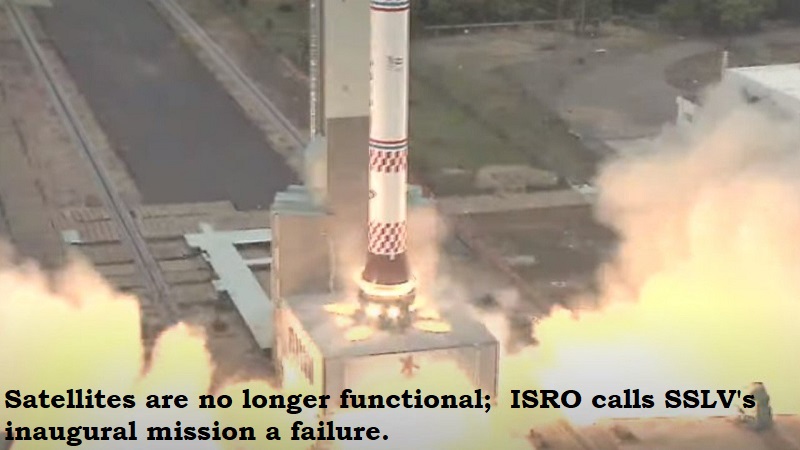
The Small Satellite Launch Vehicle (SSLV) successfully launched from the Satish Dhawan Space Centre’s first launch pad on Sunday, but the mission was unsuccessful and the Indian Space Research Organization (Isro) declared that the satellites are no longer functional.
As it failed to fire at the terminal stage, the Velocity Trimming Module (VTM), which places the satellites into their desired orbits, is being pointed to as the cause of failure. The VTM was only slightly lit during the first of the intended thirty seconds of ignition.
Although all stages were said to have operated smoothly, the Indian space agency did not immediately call the mission a success and instead first alluded to data loss.
Instead of putting the satellites into a 356 km circular orbit, SSLV-D1 put them into a 356 km x 76 km elliptical orbit. We can no longer use satellites. Problem is correctly detected. Failure of a logic to recognise a sensor failure and pursue a salvage action, according to an announcement from Isro.
The morning announcement from Isro stated that the SSLV’s ‘Maiden Flight is Complete.’ Every stage went off without a hitch. When the stage is nearing its end, data loss is seen. It is being investigated. Soon to be updated.
The performance of the satellite will be compromised by an unstable orbit, and there is a danger that it could collide with other satellites or, in the worst event, crash back to Earth.
Two significant satellites—the Earth Observation Satellite (EOS-02) and the AzadiSAT, a CubeSat created by 750 female students to commemorate India’s 75th anniversary of independence—have been lost as a result. According to analysts, the satellites most likely ended up over the Pacific Ocean between Australia and New Zealand.
A committee will be formed by Isro to investigate the failure. ‘A committee would review and make recommendations. As soon as the suggestions are put into practise, ISRO will release SSLV-D2,’ the organisation added.
The future of SSLV, Isro’s answer to the small satellite launch market, also looks grim, as the inaugural flight has not given the desired result. Developed at Rs 169 crore, the launch vehicle was pegged to be ready for flight in just 72 hours and could carry satellites up to 500 kilograms into space.
Isro, which boasts a flawless track record of launching satellites and missions into not just Low Earth Orbit (LEO), but also into deep space, has now suffered two losses in the course of just one year. Only a few months have passed since the PSLV-C53 mission, which successfully launched the Earth observation satellite, deployed.
When the GSLV-F10 mission was lost shortly after takeoff in 2021, Isro has discovered yet another loss. Isro lost the mission just 297.3 seconds after takeoff owing to a ‘technical malfunction,’ which it later said was caused by an error in the performance of the launch vehicle’s Cryogenic Upper Stage (CUS).
Following takeoff, there was an abnormal buildup of pressure in the propellant (Liquid Hydrogen or LH2) tank during the flight, which resulted in a decreased tank pressure during engine ignition. A leak in the corresponding Vent and Relief Valve (VRV), which is meant to release the surplus tank pressure during flight, caused a reduction in the flow of liquid hydrogen into the engine’s thrust chamber.

Post Your Comments